21 Jul Acid Mine Drainage is My New Developer
Test prints washing in my new darkroom on Long Run, in the North Fork Blackwater Watershed.
Exhibition details coming soon.
Test prints washing in my new darkroom on Long Run, in the North Fork Blackwater Watershed.
Exhibition details coming soon.
“As artists and designers, we know something about the language and idioms of seeing. Now, because of networked systems and ubiquitous capture, perception and representation are changing faster than ever before. For the artists, designers, and culture operators who work with technology – especially imaging and information technologies – our job, or jobs, are clear.
We may work to predict the cultural consequences of new technologies, warning us of dangerous futures, or speculating about interesting ones.
We may author whimsical, provocative and illogical tools that liberate minds, connect hearts, creatively invert authority, and empower skeptical thought.
Using artistic techniques like defamiliarization, we may awaken others from their slumber to see common things in an unfamiliar way, in order to enhance perception of the familiar.
Using the artistic techniques of visualization, we can delineate the unseen forces that shape our lives, in order to reveal the invisible.
Above all, we are obliged to take a ‘seat at the table’ to help set – and not simply be victim to – technological agendas.”
“My relatives were nomads. Not nomads of the steppes, herders of reindeer and jackass, but city-dwelling nomads, migrants from city to city, from country to country. They belonged to the tribes which preferred breeding livestock to planting seeds, the high seas to the craftsman’s workbench; the tribes whose members are still resisting, with varying success, the advances of the eight-hour work day, modern production methods and the regulation and regimentation of international travel. They chose vocations (some of them simple, others complicated and hazardous) which did not interfere with their habit of roaming all over the three hundred and sixty degrees of the compass. They were migratory creatures, generally held in contempt, and not infrequently cursed, to whom the world, envious of their freedom, gradually bars all roads.”
— Manuel Rojas, 1951
“A good artist must also have a streak of insanity in him, if by insanity is meant an exaggerated inability to adapt. The individual who can adapt to this mad world of to-day is either a nobody or a sage. In the one case he is immune to art and in the other he is beyond it.”
— Henry Miller
http://www.brainpickings.org/2015/01/21/to-paint-is-to-love-again-henry-miller/
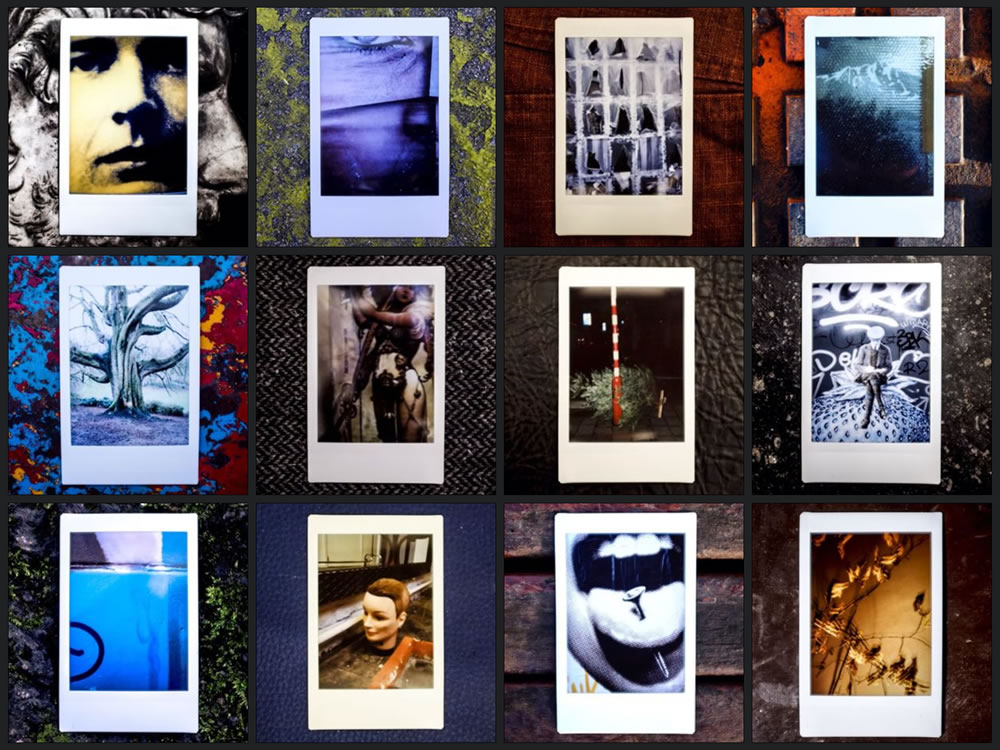
I’ve found myself compelled to do daily shots on instant film again.
I’m posting them on Instagram if you want to follow along:
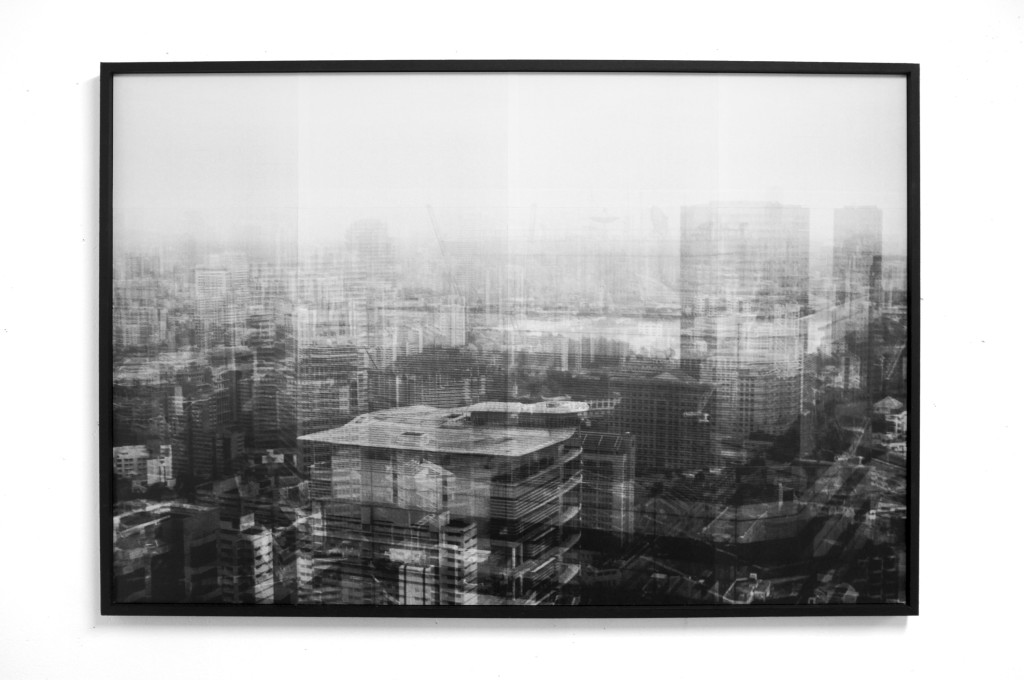
I will be showing two new Every Path is Viable works as part of the group exhibition “Every Day I’m…” at Harlan Levey Projects in Brussels. You are invited to join us for the vernissage this Saturday:
Harlan Levey Projects is pleased to present a group exhibition featuring works from TR Ericsson, Haseeb Ahmed, John Ryan Brubaker, Sanam Khatibi, Volkan Diyaroglu, Willehad Eilers and ‡ DyingBreed ‡ (Petr Davydtchenko + Astrid Gnosis).
Opens Saturday January 17th, 14:00 – 20:30 | More Information
“If you want to see what a street in Singapore looks like, you can go on Google Street View. I’m not really interested in capturing reality. I think we’re a bit stuck in that rational way of looking at the world, in a particular sort of focus and perspective. That’s why I like black and white photography: it immediately becomes clear that what you’re showing is not reality. I like that reinforcement; I like the fact that you become aware that this is a representation, a simplification, or an abstraction.”
— Studio Visit: John Ryan Brubaker (via PhotographsOnTheBrain)
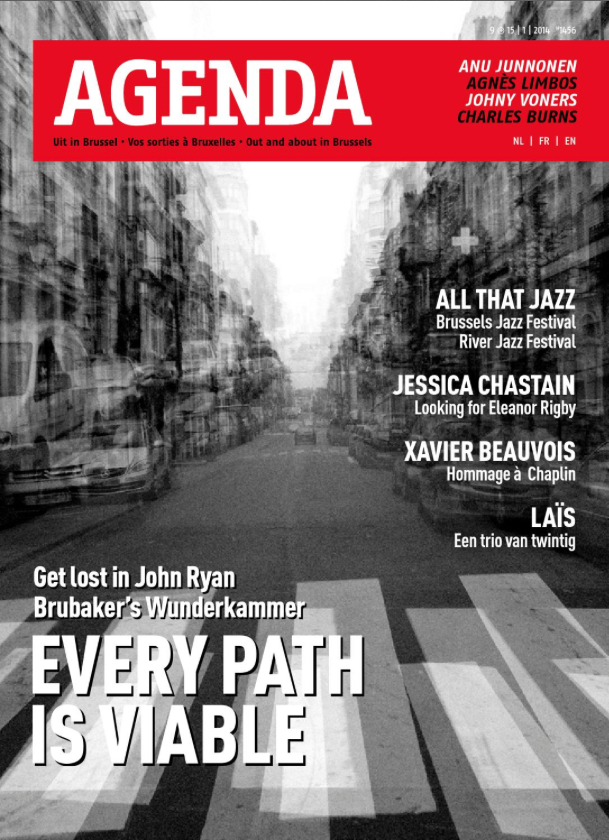
AGENDA magazine came by my studio at Greylight Projects.
Thanks to Kurt Snoekx for the text and Heleen Rodiers for the photos.
http://www.agendamagazine.be/en/blog/studio-visit-john-ryan-brubaker
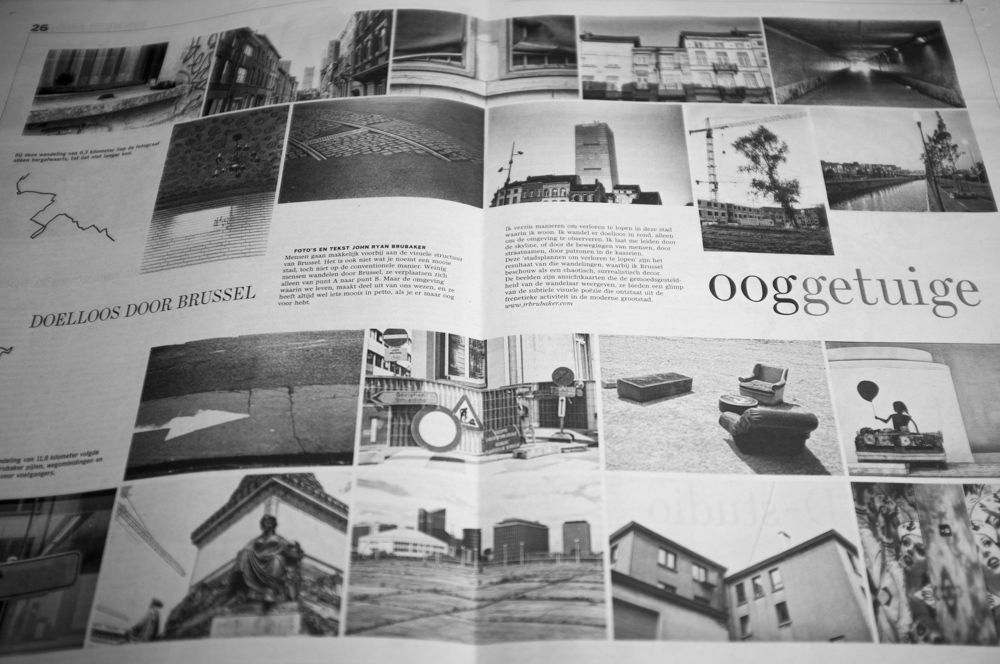
A selection of images from my Maps for Getting Lost series is featured as De Standaard’s ‘ooggetuige’ spread this weekend.
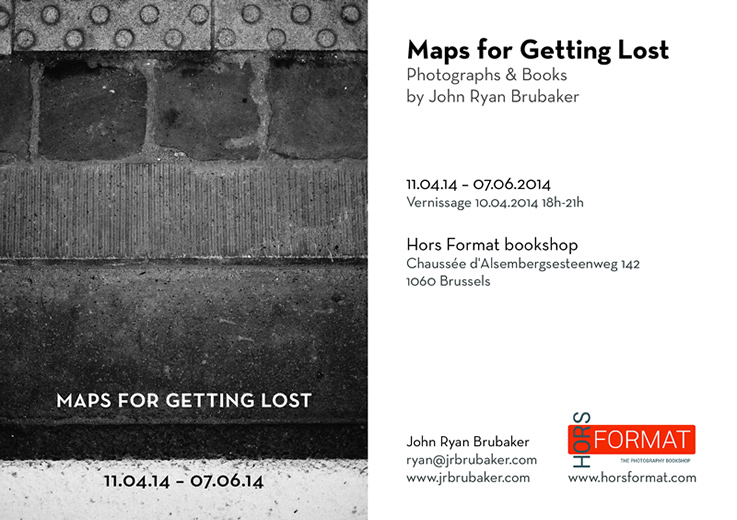
Your presence is requested:
https://www.jrbrubaker.com
https://www.facebook.com/events/416657575145651/
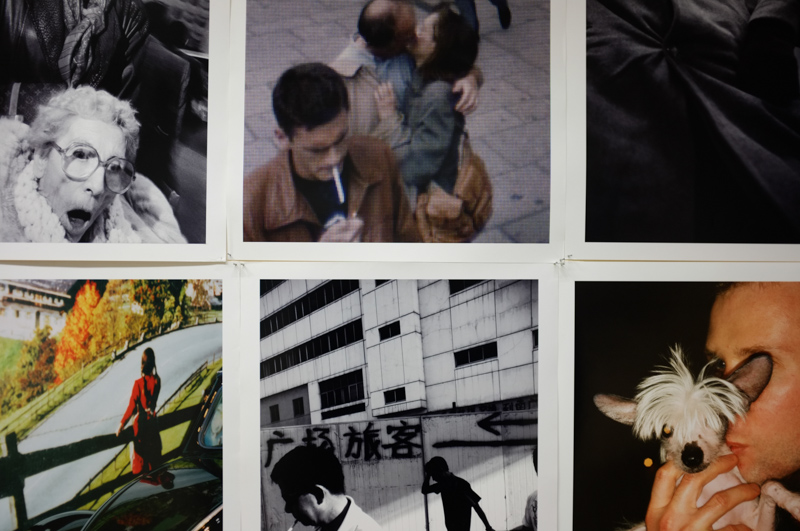
Bruges, Belgium 2013
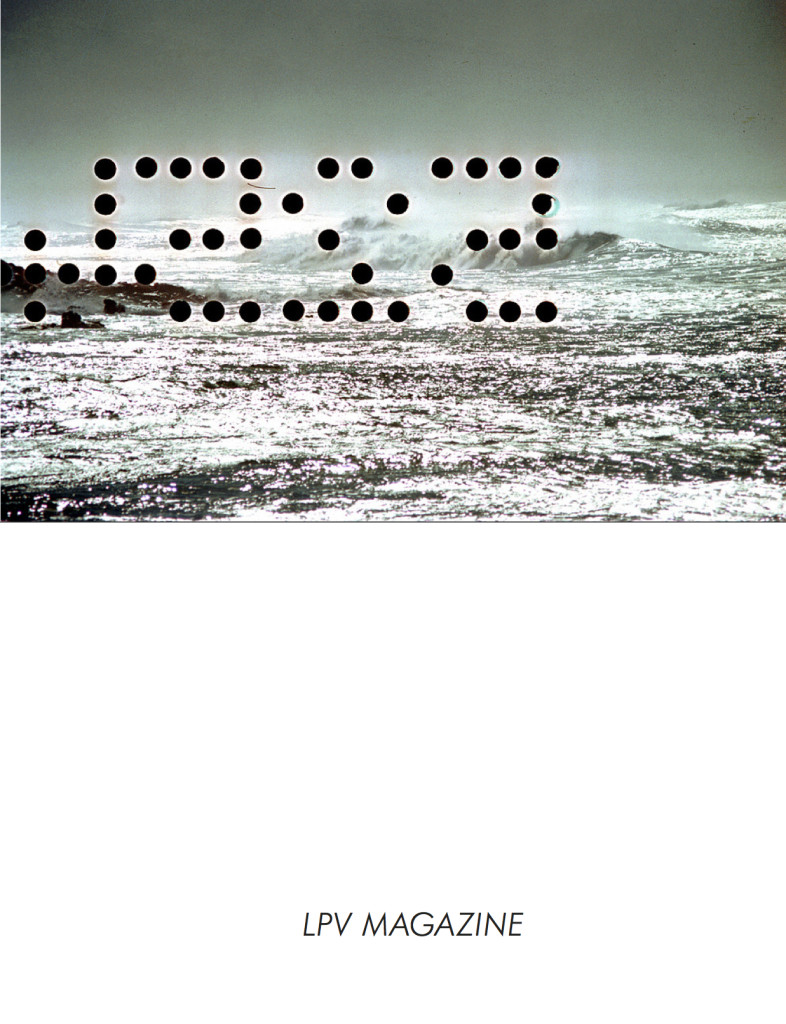
Please check out LPV Magazine 7 (The Last Issue). You can view it free on the web, on your iPad, and even order a print copy.
Bryan and I have been working together on a few of these issues and it’s always an interesting exercise. An inexperienced print designer like myself tries to standardize as many elements as possible, but every set of photographs requires different thinking. And it’s always a different experience from designing for the web. How many run per page, do they need space, how much text has to run around them? When I first download the zip files of all the photographs, I start somewhat detached, knowing I usually have to edit down the number per story. What is an interesting photograph for the photography editor is slightly different from what is an interesting photograph for the designer. By the end, I have been looking at and “know” the photographs in a way that’s not possible when just blogging them.
Along with the design, I have a feature on Nick DeWolf in the magazine (starts on page 56, towards the end). I’ve featured singles from DeWolf on my blog for years. The LPV format was an opportunity to explore a specific aspect of the archive. I’ll try to reproduce the feature using a Tumblr photoset.
Featuring: Jin Zhu, Troy Holden, Bruce Hall, Megan McIsaac, Charles Harbutt, John Ryan Brubaker and the Nick DeWolfe Archive
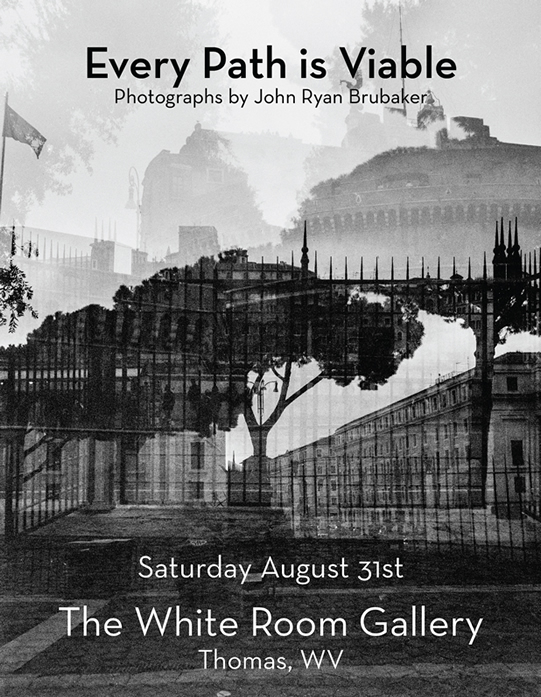
Every Path is Viable, opening this Saturday, at The White Room Gallery in Thomas, West Virginia.
“Changing the question ‘free from what?’ into ‘free for what?’; this change that occurs when freedom has been achieved has accompanied me on my migrations like a basso continuo. This is what we are like, those of us who are nomads, who come out of the collapse of a settled way of life.”
— Vilém Flusser, from On the Freedom of the Migrant: Objections to Nationalism, 1994
See Also: Vilém Flusser on History, Science & the Photograph